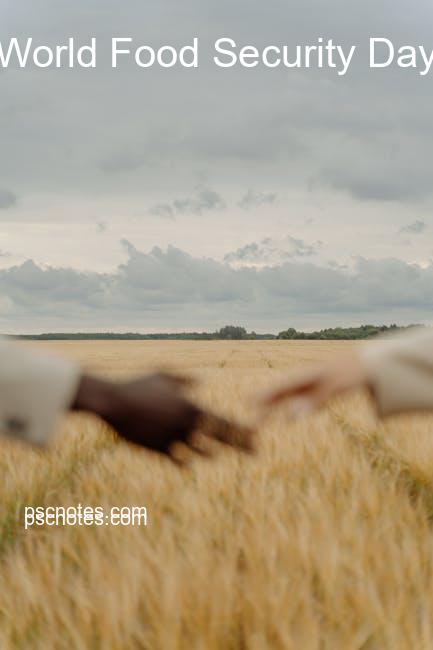National Post Day: Celebrating the Power of the Written Word
National Post Day, celebrated annually on October 13th, is a day dedicated to acknowledging the enduring power of the written word and the vital role postal services play in connecting people and communities. From handwritten letters to official documents, postcards to packages, the postal system has been a cornerstone of communication and commerce for centuries.
This day serves as a reminder of the historical significance of the post office and its ongoing relevance in a world increasingly dominated by digital communication. It’s a chance to reflect on the impact of postal services on our lives, celebrate the dedication of postal workers, and appreciate the unique value of tangible communication.
A Brief History of Postal Services
The concept of postal services dates back to ancient civilizations, with evidence of organized mail delivery systems found in ancient Egypt, Persia, and Rome. These early systems primarily served government officials and the elite, but the need for communication spurred the development of more widespread postal networks.
Key Milestones in Postal History:
- 15th Century: The establishment of regular postal routes in Europe, facilitated by the invention of the printing press and the growing need for information dissemination.
- 17th Century: The introduction of the “penny post” in England, making postal services more affordable and accessible to the general public.
- 19th Century: The development of the modern postal system, with the introduction of standardized postage rates, mail sorting machines, and the establishment of national postal services in many countries.
- 20th Century: The rise of airmail and the expansion of international postal networks, connecting people across continents.
- 21st Century: The emergence of digital communication and the decline of traditional mail, but the postal system continues to play a vital role in delivering essential services and connecting communities.
The Enduring Importance of Postal Services
Despite the rise of digital communication, postal services remain essential for a variety of reasons:
- Accessibility: Postal services provide a reliable and affordable means of communication for everyone, regardless of their access to technology or digital literacy.
- Reliability: Postal services offer a secure and predictable way to send and receive important documents, packages, and other items.
- Community Connection: Postal services play a vital role in connecting people within communities, especially in rural areas where other communication options may be limited.
- Economic Impact: Postal services support a wide range of businesses and industries, from online retailers to small businesses, and contribute significantly to national economies.
- Social Impact: Postal services provide essential services for individuals and organizations, including the delivery of medication, financial aid, and other vital resources.
Celebrating National Post Day
National Post Day provides an opportunity to celebrate the enduring importance of postal services and acknowledge the dedication of postal workers. Here are some ways to celebrate:
- Send a handwritten letter or postcard: Take the time to write a letter or postcard to a loved one, friend, or family member. This simple act can bring joy and strengthen relationships.
- Support local businesses that rely on postal services: Patronize businesses that rely on postal services for their operations, such as online retailers, small businesses, and local artisans.
- Thank a postal worker: Take a moment to thank a postal worker for their hard work and dedication. Their efforts ensure the smooth operation of the postal system and the delivery of essential services.
- Learn about the history of postal services: Explore the rich history of postal services and discover the fascinating stories of innovation, resilience, and dedication that have shaped this vital industry.
- Share your appreciation for postal services on social media: Use the hashtag #NationalPostDay to spread awareness about the importance of postal services and celebrate the dedication of postal workers.
The Future of Postal Services
The postal industry is facing a number of challenges in the 21st century, including the rise of digital communication, declining mail volumes, and the need to adapt to changing consumer needs. However, postal services are also adapting and innovating to remain relevant and sustainable.
Key Trends Shaping the Future of Postal Services:
- E-commerce Growth: The rise of online shopping is driving increased demand for package delivery services, creating new opportunities for postal services.
- Digital Transformation: Postal services are embracing digital technologies to improve efficiency, enhance customer experience, and offer new services.
- Sustainability Focus: Postal services are increasingly focused on sustainability, reducing their environmental impact and promoting responsible practices.
- Community Engagement: Postal services are working to strengthen their connection with communities by offering new services and supporting local initiatives.
The Impact of National Post Day
National Post Day serves as a reminder of the enduring importance of postal services and the vital role they play in our lives. By celebrating this day, we can raise awareness about the value of postal services, acknowledge the dedication of postal workers, and support the continued development of this essential industry.
Table: Key Statistics on Postal Services
| Statistic | Value |
|---|---|
| Number of postal workers worldwide | 6.5 million |
| Number of letters and parcels delivered annually | 180 billion |
| Percentage of global population with access to postal services | 95% |
| Average delivery time for international mail | 7-10 days |
| Percentage of postal revenue generated by e-commerce | 25% |
Conclusion
National Post Day is a valuable opportunity to reflect on the historical significance of postal services, celebrate their ongoing relevance, and acknowledge the dedication of postal workers. From connecting communities to delivering essential services, postal services continue to play a vital role in our lives. By supporting postal services and celebrating their contributions, we can ensure their continued success and ensure that the power of the written word remains accessible to all.
Frequently Asked Questions about National Post Day
1. When is National Post Day celebrated?
National Post Day is celebrated annually on October 13th.
2. What is the purpose of National Post Day?
National Post Day is a day to acknowledge the enduring power of the written word and the vital role postal services play in connecting people and communities. It’s a chance to celebrate the history and impact of the postal system, appreciate the dedication of postal workers, and recognize the unique value of tangible communication.
3. How can I celebrate National Post Day?
There are many ways to celebrate National Post Day:
- Send a handwritten letter or postcard: Take the time to write a letter or postcard to a loved one, friend, or family member.
- Support local businesses that rely on postal services: Patronize businesses that rely on postal services for their operations.
- Thank a postal worker: Take a moment to thank a postal worker for their hard work and dedication.
- Learn about the history of postal services: Explore the rich history of postal services and discover the fascinating stories of innovation, resilience, and dedication.
- Share your appreciation for postal services on social media: Use the hashtag #NationalPostDay to spread awareness about the importance of postal services.
4. Why is National Post Day important?
National Post Day is important because it reminds us of the enduring value of postal services in a world increasingly dominated by digital communication. It highlights the accessibility, reliability, and community-building aspects of postal services, which remain essential for many individuals and businesses.
5. What are some of the challenges facing postal services today?
Postal services face several challenges, including:
- The rise of digital communication: The increasing popularity of email and other digital communication methods has led to a decline in traditional mail volumes.
- Evolving consumer needs: Consumers are increasingly demanding faster and more convenient delivery options, putting pressure on postal services to adapt.
- Economic pressures: Postal services are facing financial challenges due to declining mail volumes and rising costs.
6. How are postal services adapting to these challenges?
Postal services are adapting to these challenges by:
- Embracing digital technologies: Implementing online services, tracking systems, and other digital tools to improve efficiency and customer experience.
- Expanding package delivery services: Focusing on e-commerce growth and offering a wider range of delivery options.
- Promoting sustainability: Adopting environmentally friendly practices and reducing their carbon footprint.
- Strengthening community engagement: Offering new services and supporting local initiatives to connect with communities.
7. What is the future of postal services?
The future of postal services is likely to involve a combination of traditional services and new digital offerings. Postal services will need to continue to adapt to changing consumer needs and embrace innovation to remain relevant and sustainable.
8. Where can I find more information about National Post Day?
You can find more information about National Post Day by searching online using the hashtag #NationalPostDay or by visiting the websites of postal service organizations in your country.
Here are a few multiple-choice questions about National Post Day, with four options each:
1. When is National Post Day celebrated?
a) October 1st
b) October 13th
c) November 1st
d) December 13th
2. What is the primary purpose of National Post Day?
a) To celebrate the invention of the printing press.
b) To acknowledge the importance of postal services in connecting people and communities.
c) To promote the use of email and other digital communication methods.
d) To raise awareness about the environmental impact of postal services.
3. Which of the following is NOT a way to celebrate National Post Day?
a) Sending a handwritten letter or postcard.
b) Supporting local businesses that rely on postal services.
c) Thanking a postal worker for their hard work.
d) Organizing a protest against the rising cost of postage.
4. What is one of the major challenges facing postal services today?
a) The decline in traditional mail volumes due to the rise of digital communication.
b) The lack of skilled workers in the postal industry.
c) The increasing popularity of handwritten letters and postcards.
d) The lack of government funding for postal services.
5. Which of the following is an example of how postal services are adapting to changing consumer needs?
a) Offering faster and more convenient delivery options.
b) Increasing the cost of postage to offset rising costs.
c) Reducing the number of postal workers to save money.
d) Eliminating package delivery services to focus on traditional mail.
Answers:
- b) October 13th
- b) To acknowledge the importance of postal services in connecting people and communities.
- d) Organizing a protest against the rising cost of postage.
- a) The decline in traditional mail volumes due to the rise of digital communication.
- a) Offering faster and more convenient delivery options.









